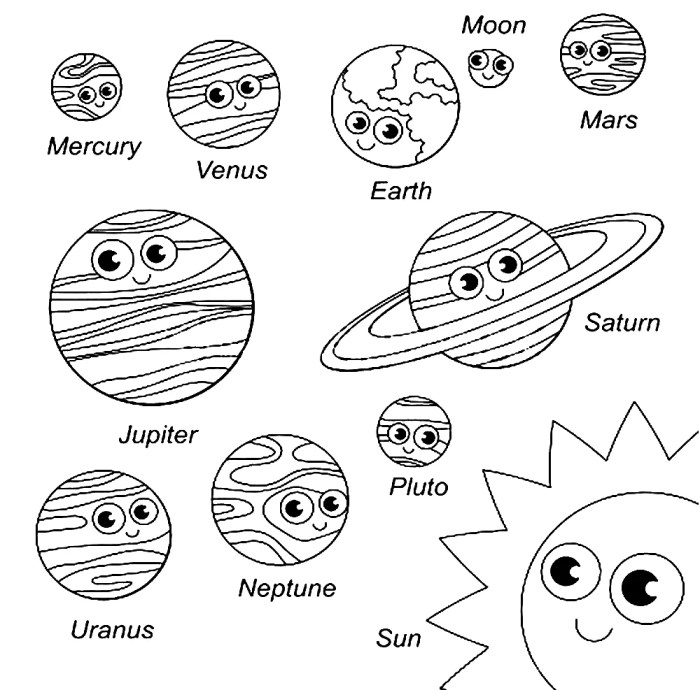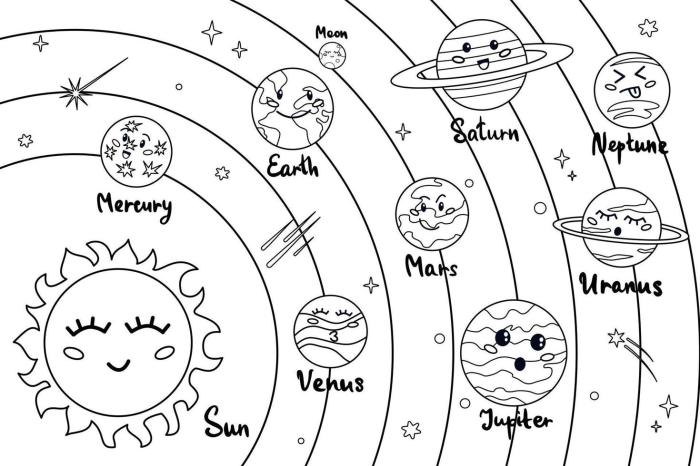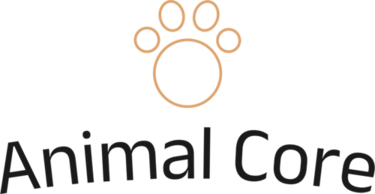Target Audience Analysis
Solar system coloring book – This coloring book, focused on the solar system, targets a range of young learners with varying interests and learning styles. Understanding these differences is crucial for creating engaging and developmentally appropriate content. The primary age groups we will consider are preschoolers (ages 3-5), early elementary school children (ages 6-8), and late elementary school children (ages 9-11).
Age Range and Learning Styles
The design and content of the coloring book will be tailored to cater to the specific cognitive and developmental stages of each age group. Preschoolers are primarily focused on visual learning and developing fine motor skills. Early elementary school children are beginning to develop reading comprehension and are increasingly interested in facts and simple explanations. Late elementary school children are more capable of absorbing complex information and engaging with more detailed illustrations and explanations.
Preschoolers (Ages 3-5)
This age group learns best through hands-on activities, visual aids, and repetition. Their interest lies primarily in bright colors, simple shapes, and recognizable characters. They are developing fine motor skills through activities like coloring and drawing.
Preschooler Persona: Lily, Solar system coloring book
Lily is a curious and energetic 4-year-old. She loves bright colors and enjoys simple, repetitive activities. Her attention span is relatively short, so activities need to be engaging and visually stimulating. Lily’s needs include large, easy-to-color spaces, simple designs, and minimal text. The coloring pages should feature large, bold images of planets and other celestial bodies.
A focus on simple shapes and bright colors would be highly appealing. For example, a large, round sun with radiating yellow lines would be more engaging than a detailed, realistic depiction.
Early Elementary School Children (Ages 6-8)
Children in this age group are starting to develop their reading and comprehension skills. They are also more interested in learning facts and simple explanations. Their learning styles incorporate visual, auditory, and kinesthetic methods. They enjoy interactive activities and are starting to develop an understanding of cause and effect.
Early Elementary Persona: Alex
Alex is a 7-year-old who enjoys learning new facts about the world. He is interested in space and is starting to understand the concept of planets orbiting the sun. Alex’s needs include simple text labels next to images, short descriptive sentences, and age-appropriate facts about each planet. The coloring pages could incorporate simple labels identifying each planet and a few key facts, like size or color.
For instance, a coloring page featuring Mars could include a small caption saying, “Mars is the red planet!” The illustrations could also include simple diagrams illustrating the order of planets.
Late Elementary School Children (Ages 9-11)
This age group is capable of absorbing more complex information and engaging with more detailed illustrations. They are also more interested in independent learning and problem-solving activities. Their learning styles are diverse and include visual, auditory, and reading comprehension. They are starting to develop critical thinking skills and an interest in deeper scientific concepts.
Late Elementary Persona: Mia
Mia is a bright 10-year-old who enjoys learning about science and exploring complex topics. She is interested in the details of the solar system and enjoys researching facts independently. Mia’s needs include more detailed illustrations, longer descriptions, and age-appropriate scientific facts. The coloring pages could include more complex illustrations, such as detailed planetary surfaces or depictions of space missions.
For example, a coloring page could feature a detailed depiction of the rings of Saturn, accompanied by information about their composition and formation. A small section could also describe the Cassini-Huygens mission to Saturn.
Content Ideation
This section details the design concepts for ten unique coloring pages, each featuring a different planet within our solar system. Each design will highlight the planet’s distinctive visual characteristics and be accompanied by interesting facts suitable for a young audience. The aim is to create engaging and educational coloring pages that accurately represent the planets and spark children’s curiosity about space.
The coloring pages will incorporate both scientific accuracy and artistic appeal, balancing detailed features with a child-friendly design. We will ensure that the illustrations are visually stimulating while remaining true to the appearance of each planet.
Planet Coloring Page Designs
The following Artikels ten unique coloring page designs, each with descriptions and coloring suggestions. Each design will incorporate specific details to enhance the visual appeal and educational value.
| Planet | Key Features | Coloring Suggestions | Interesting Facts for Children |
|---|---|---|---|
| Mercury | Cratered surface, rocky terrain | Shades of gray, brown, and tan; use darker shades for craters | Mercury is the closest planet to the sun! It’s so hot that it could melt lead. |
| Venus | Thick, cloudy atmosphere; volcanic surface | Yellowish-orange for clouds; browns and oranges for the surface | Venus is the hottest planet in our solar system, even hotter than Mercury! |
| Earth | Blue oceans, green continents, white clouds | Blues, greens, browns, and whites; use various shades to show depth | Earth is our home, and it’s the only planet we know of that has life! |
| Mars | Reddish dust, canyons, polar ice caps | Reds, oranges, browns, and whites for the ice caps | Mars is known as the “Red Planet” because of all the iron rust on its surface. |
| Jupiter | Great Red Spot, swirling clouds, bands of color | Reds, oranges, browns, whites, and yellows; use swirling patterns | Jupiter is the biggest planet in our solar system! It’s so big that all the other planets could fit inside it. |
| Saturn | Prominent rings, yellowish hue | Yellows, tans, and browns; use thin lines to represent the rings | Saturn’s rings are made of ice and rock! They’re so beautiful. |
| Uranus | Pale blue-green color, faint rings | Light blues and greens; use very light lines for the rings | Uranus is a bit of a sideways planet! It spins on its side. |
| Neptune | Deep blue color, great dark spot | Deep blues, dark blues, and possibly some hints of white | Neptune is the windiest planet in our solar system! |
| Pluto (Dwarf Planet) | Light brown, reddish areas, icy surface | Light browns, reds, and whites | Pluto is a dwarf planet, which means it’s smaller than the other planets. |
| The Moon | Gray, cratered surface, dark maria | Shades of gray, use darker shades for craters and maria | The moon is Earth’s only natural satellite. It orbits Earth! |
Illustrations & Design

The artistic style chosen for this solar system coloring book is a vibrant, slightly cartoonish realism. This approach balances the educational aspect of accurately depicting planets and celestial bodies with a fun, engaging aesthetic that will appeal to children. The style avoids overly simplistic designs while remaining accessible and enjoyable for young colorists. Detailed enough to stimulate creativity but not so complex as to be intimidating.The color palettes and visual details will be carefully considered to enhance the learning experience.
We will utilize accurate representations of planetary colors where possible, but with a slight stylistic adjustment to increase vibrancy and visual appeal.
Coloring Page Designs
Three example coloring page designs illustrate the approach:
Design 1: A Detailed Portrait of Saturn. This page will feature a large, central image of Saturn, emphasizing the planet’s rings. The rings will be depicted with intricate detail, showing their texture and subtle variations in color. The background will be a deep, inky black, contrasting sharply with the planet’s golden hues and the icy blue of the rings. The color palette will be predominantly yellows, oranges, browns, and blues, with subtle hints of white to represent the reflective ice particles in the rings.
Smaller moons will orbit around Saturn, providing additional areas for coloring and adding depth to the scene.
Solar system coloring books offer a fantastic journey through space, engaging children with planets and stars. For a change of pace, exploring the fascinating world of fungi can be equally rewarding, especially with resources like these mushroom coloring book pages , offering intricate details and unique textures. Returning to our celestial theme, remember that a solar system coloring book provides a different kind of creative outlet, focusing on cosmic wonders instead of terrestrial flora.
Design 2: A Whimsical Journey Through the Asteroid Belt. This page will present a more playful perspective. Numerous asteroids of varying sizes and shapes will populate the scene, each with slightly different textures and colors to represent their mineral compositions. The color palette will be more diverse, including reds, greens, grays, and browns, creating a sense of excitement and discovery. A small, cartoonish spaceship could be included, adding a playful element and encouraging imaginative storytelling.
The background will be a deep purple, evoking the vastness of space.
Design 3: A Close-Up View of the Sun. This design will focus on the Sun’s fiery surface, showcasing solar flares and sunspots. The style will remain cartoonish but will accurately reflect the Sun’s intense energy. The color palette will be dominated by vibrant yellows, oranges, and reds, with hints of white and even some darker shades to suggest the intensity of the solar activity. The overall effect should be dynamic and energetic, creating a visually striking page.
The background will be a simple, graduated orange to yellow, drawing attention to the sun itself.
Target Audience Appeal
The chosen artistic style directly appeals to the target audience of children aged 4-8. The slightly cartoonish realism is engaging without being overly simplistic. It avoids the potential intimidation of hyper-realistic depictions while maintaining sufficient detail to stimulate creativity and imaginative play. The vibrant color palettes and playful elements, such as the spaceship in the asteroid belt design, will further enhance the book’s appeal and encourage children to engage with the content.
The accurate depiction of planets and celestial bodies, albeit in a stylized manner, subtly introduces them to scientific concepts in an entertaining way.
Layout & Structure

Creating a visually appealing and informative layout is crucial for a successful coloring book. The arrangement of text, illustrations, and coloring areas needs to be both engaging for children and conducive to a smooth coloring experience. A well-structured layout will ensure the book is easy to navigate and enjoyable to use.The layout should guide the user through the solar system logically, making the learning process intuitive and fun.
We can achieve this by grouping planets and celestial bodies into thematic sections, making the information digestible and avoiding overwhelming the young reader.
Section Organization and Page Layout
The solar system coloring book will be organized into logical sections to enhance the learning experience. These sections will naturally group related celestial bodies. For example, we’ll have sections dedicated to the inner planets (Mercury, Venus, Earth, Mars), the outer planets (Jupiter, Saturn, Uranus, Neptune), and other celestial bodies (moons, asteroids, comets). This structured approach will create a clear narrative flow, guiding the child through the solar system’s wonders.A sample page layout, utilizing a four-column responsive design using HTML tables, is presented below.
This layout balances the space allocated to coloring, text, and illustrations. The responsive design ensures optimal viewing on various devices.
 |
MarsThe fourth planet from the Sun, known for its reddish appearance due to iron oxide on its surface. Mars has two small moons, Phobos and Deimos. |
 |
Fun Fact: The largest volcano in the solar system, Olympus Mons, is located on Mars! |
The above example shows an illustration of Mars, a descriptive paragraph, a coloring area dedicated to Mars, and a fun fact in separate columns. This design ensures that the visual and textual elements work together harmoniously.
Alternative Page Layouts
Different page layouts can be explored to determine optimal effectiveness. For instance, a two-column layout could feature a larger coloring area alongside a smaller text and illustration section. This would be suitable for pages focused primarily on coloring, such as those featuring detailed illustrations of planets. Conversely, a three-column layout could incorporate a larger illustration, a smaller coloring section, and a concise text summary.
This layout would be more suitable for pages introducing a specific celestial body with less emphasis on coloring intricate details. The choice of layout will depend on the specific content of each page, ensuring the design complements the information presented.
Additional Features: Solar System Coloring Book

Enhancing the solar system coloring book beyond simply coloring pages can significantly boost its appeal and educational value. Adding interactive elements and supplementary materials transforms it from a passive activity into a more engaging and enriching experience for young learners. The following sections detail potential additions, considering their functionality, purpose, and feasibility.
Interactive Elements: Augmented Reality (AR)
Augmented reality offers a unique opportunity to bring the solar system to life. An AR app, triggered by scanning designated pages within the coloring book, could overlay 3D models of planets, moons, and spacecraft onto the user’s view. This feature would allow children to explore the solar system in a dynamic, interactive way, rotating planets, zooming in on surface details, and even witnessing simulated events like meteor showers or eclipses.
The feasibility is dependent on the development costs of the AR app and its integration with the coloring book’s design, potentially requiring a unique print design to accommodate the AR markers. The cost-effectiveness hinges on the app’s user base and potential for future monetization, for example, through in-app purchases of additional content or features. A successful example of this type of integration can be found in various children’s books utilizing AR technology to enhance the reading experience.
Glossary of Terms
A comprehensive glossary at the back of the coloring book would provide definitions for key astronomical terms encountered throughout the pages. This would be particularly helpful for younger children learning about the solar system for the first time. Each term could include a concise definition and potentially a small illustration, clarifying concepts like “orbit,” “asteroid,” “comet,” and “constellation.” The glossary’s feasibility is high; its creation requires minimal cost and effort, primarily involving research and writing.
It adds considerable educational value without significantly increasing production expenses.
Stickers
Including a sheet of high-quality stickers featuring planets, stars, rockets, and astronauts would add a fun, tactile element to the coloring book. These stickers could be used to decorate the coloring pages themselves, creating personalized solar system scenes, or used independently as part of imaginative play. The cost-effectiveness of this addition depends on the printing costs of the sticker sheet and the overall quantity printed.
High-quality, durable stickers would enhance the value and longevity of the product, justifying a slight increase in production costs. Many successful children’s activity books utilize stickers to boost engagement and replayability.
Pull-Out Posters
A large, full-color pull-out poster featuring a detailed depiction of the solar system could serve as a visually appealing learning aid. This poster could provide a broader context for the coloring pages, showcasing the planets in their relative sizes and orbital positions. The cost is relatively low considering the added value it provides. The poster’s size and printing quality could be tailored to the overall budget, making it a cost-effective way to add significant value to the coloring book.
Many educational products include similar posters for visual learning reinforcement.
